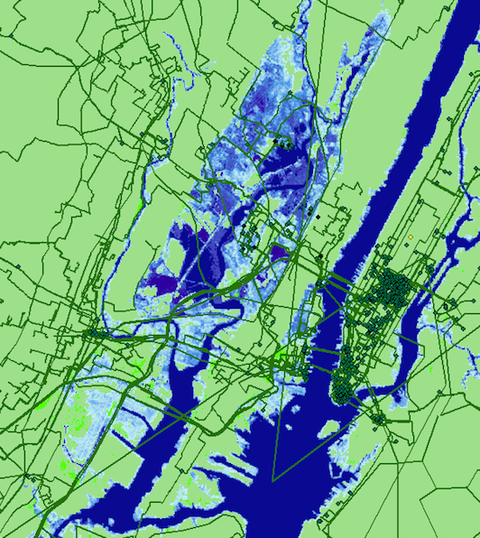A new look at sea-level rise projections discovered a threat to coastal internet infrastructure that may come much sooner than expected.
By Rob Goodier –
Climate change threatens many facets of modern human life, from eroding coastlines, climbing temperatures, and ocean acidification. But these problems extend beyond our natural world — they affect our digital world as well.
“Our findings are clear,” Paul Barford, a computer science professor and the University of Wisconsin-Madison told Popular Mechanics. “A good deal of internet infrastructure will be underwater in the next 15 years.”
In a study, Barford and his team discovered that more than 4,000 miles of buried fiber optic cable may be underwater and 1,100 nodes may be surrounded by water in just 15 years. To put that in perspective, New York City, one of the most at-risk metropolitan areas, would lose nearly 20 percent of its metro conduit and 32 percent of its long-haul conduit to rising sea levels. That’s enough to cripple internet access in the area.
What We Could Lose
To come to this concerning conclusion, researchers compared two datasets. One was the Internet Atlas, a map charting the physical location of the internet. This map geocodes infrastructure from more than 1,500 internet service providers around the world.
The researchers focused on two kinds of infrastructure: buried conduit, which includes long-haul and metro fiber; and nodes, including landing points where deep sea transoceanic fiber comes ashore, data centers, colocation facilities, and points of presence that house servers, routers, and other hardware. On the outside, nodes can look like small huts and nondescript buildings, but on the inside they are the points where buried cables terminate.
The other piece of data was the National Oceanic and Atmospheric Administration’s projection of sea level rise inundation. NOAA’s data refashions the world and its coastlines 100 years in the future, drawing on published research to describe a range of best- and worst-case scenarios. The data they use predicted a best-case rise of one foot and a worst-case rise of eight feet. Barford and his team used a range between one foot and six feet.
What they found wasn’t good. In the near term, internet infrastructure would experience a “devastating impact.” That’s because nodes are often clustered at low-elevations around dense populations. In fact, the study found that most of the damage could occur within 15 years, regardless of the scenario.
(For the balance of this article please visit: https://www.popularmechanics.com/technology/infrastructure/a22454576/climate-change-internet-damage/)









